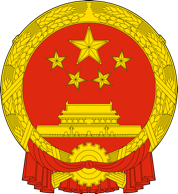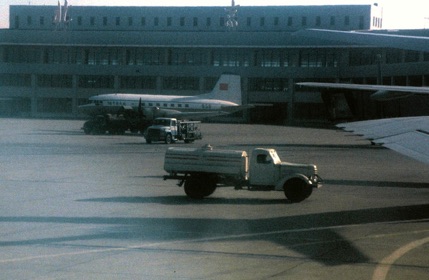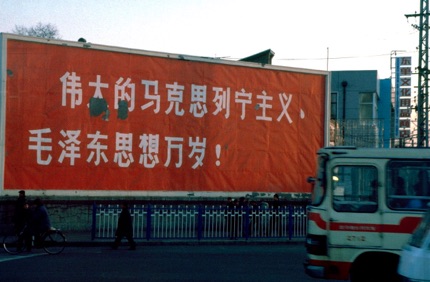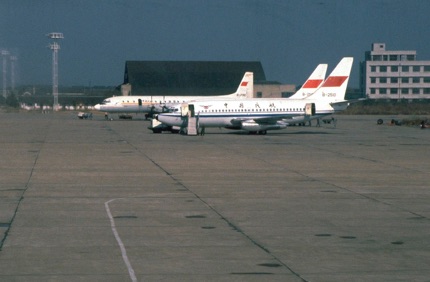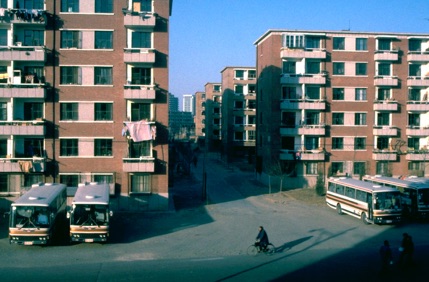China 1985

Kyrgyzstan and Tajikistan 2018

As today was Sunday, we made an early start to attend 8:00am mass at St Ignatius Cathedral in southern Shanghai. It was fascinating. Because of the split between the Catholic Church in China and the Vatican over issues to do with national sovereignty and outside interference, the cathedral identified itself as belonging to the Patriotic Catholic Church. They have never heard of the reforms of the Second Vatical Council, and so the mass was in Latin without any element of participation by the attendees (who filled the cathedral), not even responses. In fact, this full size, French style cathedral does not even have a sound system for the people to hear what is being said. The wafer was placed on the tongue in the old-fashioned way, no sermon was preached, as they are not allowed to proselytise – or to be more precise, only the 85 year old bishop may do so, and he had already taken the 7:00am service.
The cathedral was badly destroyed during the Cultural Revolution, but it has since been renovated by the government. The two large spires were destroyed, but they have now been replaced in plastic! The priest, Father Shen Bao-zhi Berchmans, who was General Secretary of the Shanghai Catholic Diocese, was delighted to see us, showing us around and presenting each of us with a very interesting set of postcards of the church and a Chinese style Christmas card.
I had expected most of the congregation to consist of old ladies, and indeed one of the reasons I thought it would be good to go to the service was so that the old parishioners could see that in other parts of the world young people still believed in religion. According to Fr Berchmans, about 25% of the congregation of 1500 people are young people, although at the service we attended the figure would have been less than this. One cannot help but admire people whose faith is so strong as to continue going to a non-participatory mass in Latin which they cannot hear for several decades under active persecution from the government!
Next door to the cathedral was the old Jesuit observatory, and much as we would have liked to have a had a close look at this example of historical geography, we were unable to do so as the building is now part of a government administration complex.
Following the mass and our mixing with the local congregation, we went to Shanghai’s Hongqiao airport via our hotel, and caught a CAAC Boeing 707 (registration B-2408) flight to Peking (nowadays more commonly called Beijing). CAAC do not serve meals in flight, so we collected a boxed sandwich lunch on the way to the airport.
It was –2 degrees Celsius when we landed in Beijing, but with no wind and clear blue skies it was very pleasant, not seeming cold at all. In fact, it was so dry that all the snow had evaporated, and we did not see any more snow during our stay in China even though the temperatures were a regular –12 minimum to +2 degrees maximum each day.
After checking into our hotel, the Hua Du Fandian on the north-east corner of the city, we set out at a little after 4:00pm for a half hour look around Tian An Men Square. Sunset was at about 4:20pm, so with the sightseeing lasting from 4:30pm to 5:00pm, it was largely done in twilight. Nonetheless, we were able to get some feeling for the grandeur of Beijing from the visit. The square can hold over a million people (it did so for Mao’s funeral in 1976), and it contains many of Beijing’s famous landmarks such as the Great Hall of the People, the Museum of Revolutionary History, the Chairman Mao Memorial Hall, the Monument to the People’s Revolutionary Martyrs, the several hundred metres wide Chang’an Avenue (Avenue of Everlasting Peace), Qianmen (the large stone gate which marked the southern entrance into the old imperial city) and the Gate of Heavenly Peace from which Mao proclaimed the People’s Republic in 1949.

Day 13
Shanghai to Beijing
Sunday, 15 December 1985
